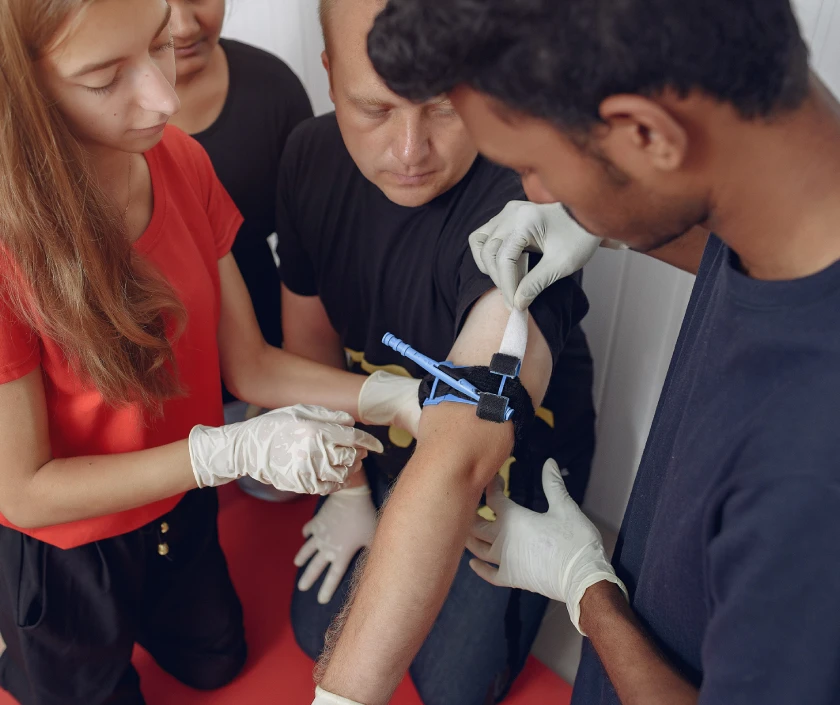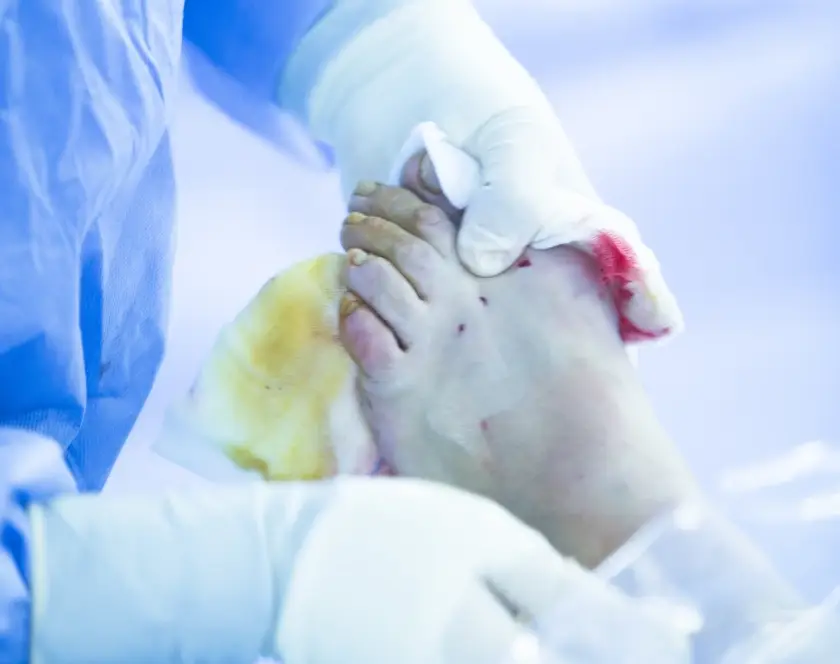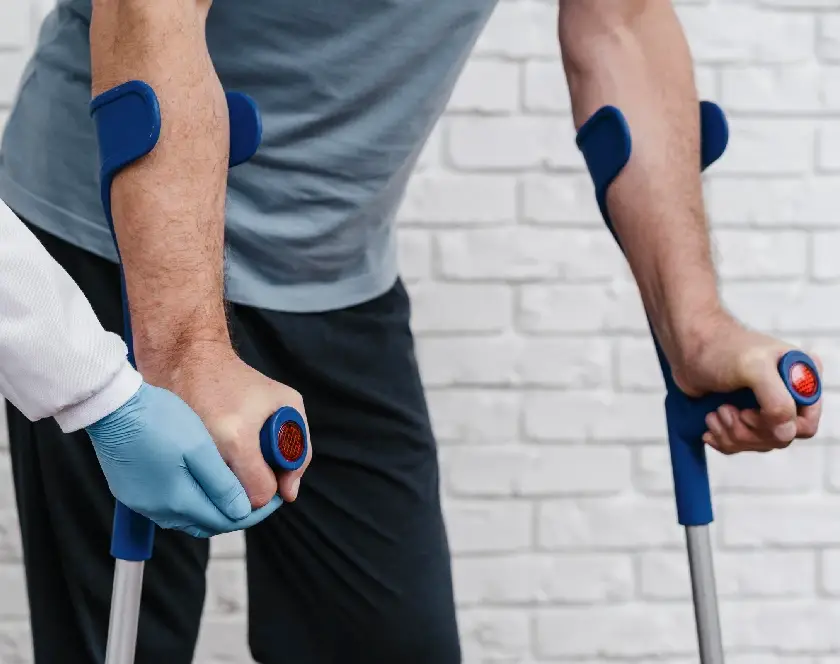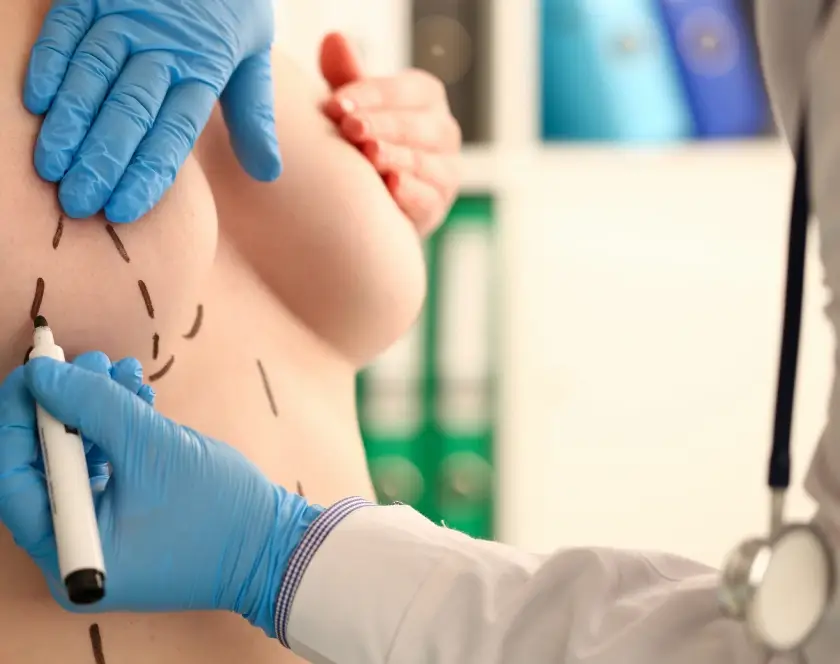What is Head and Neck Reconstruction?
At Elegance Clinic, we understand that injuries and diseases affecting major blood vessels can have life-threatening consequences and severely impact your mobility and quality of life. Macrovascular surgery is a specialised field that focuses on treating large artery and vein injuries to restore proper blood flow and preserve limb function. Whether you are suffering from traumatic arterial injury, deep venous thrombosis, or peripheral arterial disease, our expert vascular and reconstructive surgeons provide precise, compassionate care to ensure optimal recovery.
Our macrovascular surgery services cover arterial injuries (brachial, axillary, radial, ulnar, femoral, popliteal, posterior tibial, anterior tibial, peroneal, dorsalis pedis), venous injuries, deep venous thrombosis treatment, vascular bypass for peripheral arterial deficit, vascular repair using vein or synthetic grafts, and arteriovenous fistula creation for dialysis.
What is Macrovascular Surgery?
Macrovascular surgery involves surgical procedures targeting the body’s major blood vessels, the arteries and veins that carry oxygen-rich blood to your limbs and return deoxygenated blood to your heart. Injuries or blockages in these vessels can cause severe complications, including tissue death, chronic pain, non-healing wounds, or amputation if left untreated.
At Elegance Clinic, we perform macrovascular surgery with a patient-centred approach using advanced surgical and microsurgical techniques. This ensures safe restoration of circulation, prevents limb loss, and improves patients’ long-term functional outcomes. From trauma reconstruction to vascular bypass and deep venous thrombosis treatment, our team provides comprehensive vascular care for upper and lower limbs.
Conditions Treated with Macrovascular Surgery
Arterial Injuries
Traumatic injuries to arteries are common in road accidents, industrial injuries, falls, or penetrating wounds like knife or glass injuries. Arteries commonly affected include:
- Brachial and Axillary Artery Injuries: These supply blood to the upper arm and forearm. Injury can cause severe bleeding, coldness, numbness, and loss of function in the arm and hand. Surgical repair restores circulation and prevents permanent disability.
- Radial and Ulnar Artery Injuries: These forearm arteries are crucial for hand perfusion. Injuries may result in poor wound healing, pain, and tissue necrosis if untreated. Our vascular repair restores hand function effectively.
- Femoral Artery Injury: The femoral artery supplies the thigh and lower leg. Damage here leads to life-threatening bleeding and limb-threatening ischemia. Emergency vascular repair or bypass is essential.
- Popliteal Artery Injury: Located behind the knee, injury to this artery can cause rapid deterioration of lower leg viability. Timely surgical intervention prevents amputation.
- Posterior Tibial, Anterior Tibial, Peroneal, and Dorsalis Pedis Artery Injuries: Injuries to these lower leg and foot arteries can compromise walking, wound healing, and toe viability. Reconstruction restores normal blood flow and mobility.
Deep Venous Thrombosis (DVT)
Deep venous thrombosis treatment is critical to prevent pulmonary embolism, a life-threatening complication where blood clots travel to the lungs. DVT typically forms in deep leg veins, causing leg swelling, pain, and redness. At Elegance Clinic, we provide comprehensive management:
- Medical therapy: Blood thinners (anticoagulants) to dissolve clots and prevent new ones.
- Surgical thrombectomy: For large clots causing severe symptoms or when anticoagulation is contraindicated.
- Compression therapy: Special stockings to improve circulation and prevent post-thrombotic syndrome.
Peripheral Arterial Deficits and Vascular Bypass
Peripheral arterial disease (PAD) occurs due to narrowed arteries from plaque build-up (atherosclerosis), leading to reduced blood flow to limbs. Symptoms include leg pain on walking (claudication), non-healing foot wounds, and cold limbs. Severe PAD risks limb amputation if untreated.
Vascular bypass surgery creates a new pathway around blocked arteries using:
- Vein grafts (autologous grafts): Using the patient’s vein, often the saphenous vein.
- Synthetic grafts (Dacron/PTFE): For larger arteries where vein grafts are unsuitable.
Our vascular bypass restores blood flow, relieves pain, improves walking ability, and saves limbs from amputation.
Advanced Macrovascular Surgical Procedures at Elegance Clinic
Vascular Repair Using Vein Grafts
We use vein grafts harvested from your own body (commonly the saphenous vein) to repair or bypass damaged arteries. Vein grafts integrate well with existing tissues and have excellent long-term patency, making them ideal for brachial artery repair, femoral bypass, and tibial artery reconstruction. Our surgeons ensure meticulous anastomosis.
Vascular Repair Using Dacron/PTFE Grafts
When vein grafts are unavailable or inadequate, synthetic grafts made of Dacron or PTFE provide durable and biocompatible alternatives, especially for large artery repairs. These grafts are commonly used for femoral-popliteal bypasses and aortic repairs, ensuring restored blood flow and limb viability.
After vascular repairs, exposed vessels or grafts require immediate soft tissue coverage to prevent infection and failure. Our reconstructive plastic surgeons use:
- Local flaps: Tissues moved from nearby areas.
- Free flaps: Tissues transferred from distant sites with microsurgical vessel connection.
- Skin grafts: Thin layers of skin to cover superficial defects.
This ensures protection, robust healing, and prevents complications, securing the success of vascular surgeries.
Arteriovenous (AV) Fistula for Dialysis
Patients with end-stage renal disease need durable dialysis access. An arteriovenous fistula is the preferred access method, connecting an artery to a vein to increase blood flow and strengthen the vein for repeated dialysis. Types include:
- Radial AV Fistula: At the wrist, connecting the radial artery to the cephalic vein. Preferred for longevity and minimal complications.
- Brachial AV Fistula: At the elbow, connecting the brachial artery to the arm veins when radial options are not suitable.
Our surgeons perform AV fistula creation with precision to ensure effective dialysis access and long-term success.
Specialised Care for Peroneal Tendonitis and Tendinopathy
Although peroneal tendonitis and peroneal tendinopathy treatment primarily involve tendon disorders, vascular supply plays a crucial role in healing. We provide integrated evaluation for patients with ankle injuries or chronic tendon pain, addressing both tendon inflammation and vascular insufficiency for holistic recovery. Treatment includes physiotherapy, anti-inflammatory medication, and surgical tendon repair when needed.
Why Choose Elegance Clinic for Macrovascular Surgery?
At Elegance Clinic, we combine vascular surgical expertise with compassionate patient care. Our surgeons have years of experience in managing complex arterial and venous injuries using microsurgery and reconstructive techniques. We prioritise:
- Limb preservation and function restoration
- Minimally invasive and open surgical options based on your condition
- Advanced operation theatres (OTs) with vascular and microsurgical facilities
- Personalised care plans for arterial injuries, DVT, and PAD
- Integrated post-operative rehabilitation and wound care
We ensure that each patient receives tailored treatment to restore circulation, relieve pain, and regain mobility confidently.
Hear from our patients
EXCELLENTTrustindex verifies that the original source of the review is Google. Dr.shah is very kind and understanding... during my surgery of xentholesma..sir didn't late me feel nervous at all..he kept talking to me..he kept singing classic old hindi songs while performing surgery..I was like "ye to apne type ka banda hai"..I didn't even realise when my surgery got over. mr. Bhargav in staff and other team members were very kind an supportive.. I just have one minor complaint..simple panipuri wala or vegetable person in surat is always ready to receive online,UPI ,QR payment..but,pharmacist over their always be like "mera to cash payment hoga". Rest all is good.. people over there are very sincere at their work. I would definitely suggest to visit elegance clinic for getting your xentholesma cured.treatment charges are also affordable.Posted onTrustindex verifies that the original source of the review is Google. I am fully satisfied my hydrafacial treatmentPosted onTrustindex verifies that the original source of the review is Google. The experience was too good staff was really humble and the results were actually good!Posted onTrustindex verifies that the original source of the review is Google. I got hair transplant which is very painful but Got it done on ELEGANCE so it was very normal and which was bery helpful for me Special thanks to staff.Posted onTrustindex verifies that the original source of the review is Google. I had PRP and laser treatments at Elegance clinic for my skin and hair, and the experience has been truly excellent. Dr. Krina handled my skin treatment with great care and attention — I noticed a visible improvement in my skin texture and glow. For my hair, Dr. Bhargav and Dr. Ashutosh guided me through the PRP sessions with patience and professionalism, ensuring I was comfortable and well-informed throughout. The entire staff is polite, supportive, and the clinic maintains high standards of hygiene and advanced equipment. Overall, I’m very satisfied with the results and would highly recommend this hospital to anyone looking for genuine care and effective treatmPosted onTrustindex verifies that the original source of the review is Google. Dr Asutosh sir is very excellent Tammy tack sargary..Posted onTrustindex verifies that the original source of the review is Google. A good doctor clinic review often highlights a clinic's positive aspects, such as a doctor's expertise, a friendly and competent staff, convenient hours, and a clean, comfortable environment.Posted onTrustindex verifies that the original source of the review is Google. After suffering a serious burn injury due to a machine accident, I was fortunate to be treated by Dr. Ashutosh Shah at Elegance Clinic. His skill and calm approach gave me confidence from the first consultation. The surgery was done with great care, and the recovery support was outstanding. The clinic is clean and peaceful, and the staff treats you like family. Forever thankful for their help during a very tough timePosted onTrustindex verifies that the original source of the review is Google. One of the best doctors as well as staff in the town, just loved the process post surgery, follow up calls is non negotiable for them. Dr ashutosh shah and dr chetan were incredible. Best service provided by the elegance clinic!Posted onTrustindex verifies that the original source of the review is Google. "We had a wonderful experience at Elegance Clinic for my wife's HIFU treatment. The staff was friendly and supportive, and the clinic environment was very professional. Dr. Ashutosh Shah took the time to explain the procedure and what to expect. The final result is excellent—my wife's skin looks much firmer and rejuvenated. She is very happy, which makes me happy! A truly world-class clinic for aesthetic procedures
Contact Us
Ready to discuss? Fill out our contact form for a confidential consultation.
FAQ
How do I know if I need vascular surgery for leg pain?
If you experience leg pain while walking, cold limbs, non-healing wounds, or sudden swelling, you may need vascular evaluation for conditions like PAD or DVT.
What is the success rate of vascular bypass surgery?
Success rates are high when performed by experienced surgeons with proper post-operative care. Vein grafts generally have better long-term patency compared to synthetic grafts.
Is AV fistula surgery painful?
AV fistula creation is performed under anaesthesia. Post-surgery pain is minimal and managed with medications, allowing quick recovery.
How is deep venous thrombosis diagnosed?
DVT is diagnosed through clinical examination, Doppler ultrasound, and blood tests like D-dimer levels.
Is macrovascular surgery covered under insurance?
Most procedures for arterial injuries, PAD, or AV fistula creation are covered. Our team will assist with insurance processing for your treatment.







